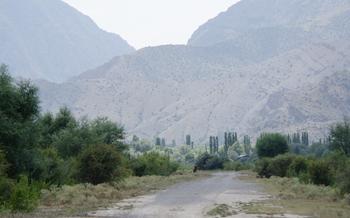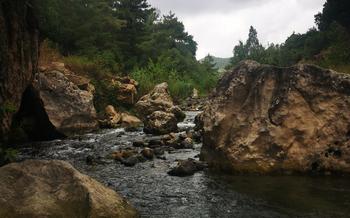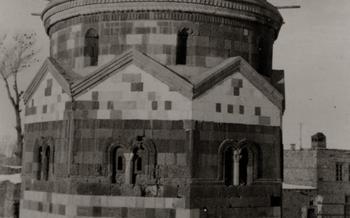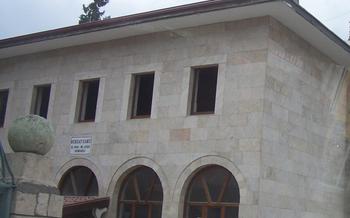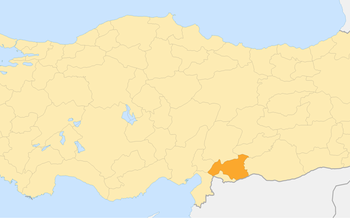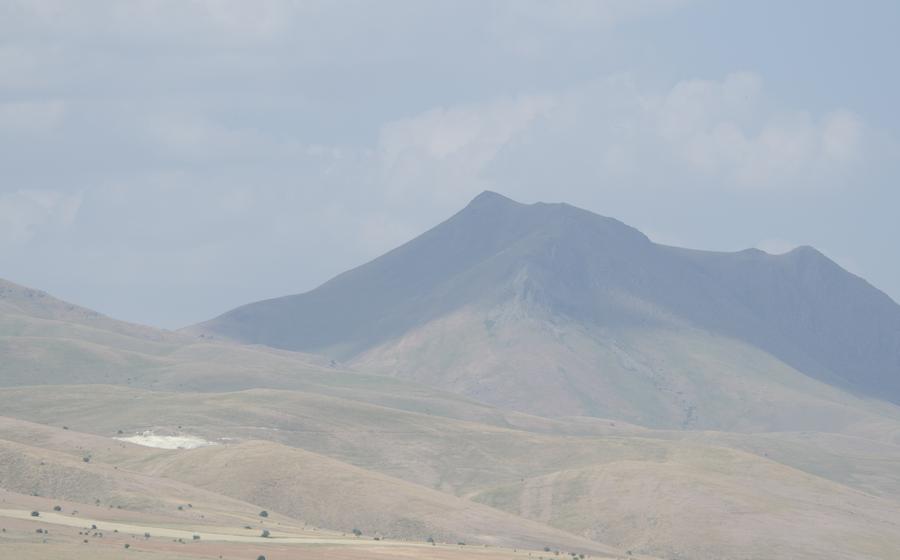
Saltuklu History Museum
- The Antiquity of Erzurum
- The Saltuklu Dynasty and Their Legacy
- Exploring the Saltuklu History Museum
- Unveiling the Treasures of Islamic Art
- Saltuklu Sultans and Their Contributions
- A Glimpse into Saltuklu Daily Life
- The Legacy of the Saltukids on Erzurum
- The Enchanting City of Erzurum
- Capturing the Essence of Saltuklu History
- Delving into the History of Erzurum
- Saltuklu Craftsmanship and Artisanship
- The Saltuklu Impact on Regional Cuisine
- The Saltuklu Heritage Trail
- Insider Tip: Unveiling the Hidden Treasures of the Saltuklu History Museum
The Antiquity of Erzurum
Erzurum is a city of ancient origin, with a rich history dating back to pre-Islamic times. The city's strategic location at the crossroads of major trade routes and its proximity to various empires and civilizations have made it a melting pot of cultures and civilizations. The Urartians, Armenians, Romans, Byzantines, and Seljuks are just a few of the many civilizations that have left their mark on Erzurum.
The city's architectural heritage reflects its diverse past, with remnants of ancient fortresses, churches, mosques, and madrasas still standing today. Erzurum has long been a center of learning and scholarship, and its many madrasas and libraries have produced numerous scholars and intellectuals throughout history. The city's rich cultural heritage is also evident in its traditional arts and crafts, such as carpet weaving, metalworking, and ceramics.
The Saltuklu Dynasty and Their Legacy
The Saltukids emerged as a prominent dynasty in the 12th century, establishing the Erzurum Beylik, an independent principality centered in the city of Erzurum. The Saltukids, under the leadership of the founder, Saltuk Bey, played a crucial role in shaping the region's history and leaving a lasting legacy on Erzurum's cultural and architectural landscape.
The Saltukids were renowned for their architectural achievements, constructing mosques, madrasas, and other landmarks that showcased their artistic prowess. The Great Mosque of Erzurum, built during the Saltuklu period, stands as a testament to their architectural mastery. The mosque's intricate stone carvings, decorative portals, and graceful minaret reflect the Saltukids' commitment to aesthetics and craftsmanship.
Beyond architecture, the Saltukids were also patrons of the arts and sciences. They established madrasas and supported scholars and artists, creating a vibrant intellectual environment in Erzurum. The Saltukids' patronage contributed to the development of Islamic calligraphy, illumination, metalwork, ceramics, and textiles, leaving a rich legacy of artistic achievements.
The Saltuklu period was a time of prosperity and expansion for Erzurum. The city became a major trading hub, connecting the East and the West. The Saltukids' strategic alliances and military prowess allowed them to expand their territories, extending their influence beyond Erzurum. Their reign marked a significant chapter in the city's history, leaving an indelible mark on its identity and heritage.
Exploring the Saltuklu History Museum
The Saltuklu History Museum stands as a testament to the rich cultural heritage of Erzurum. Located in the heart of the city, the museum is easily accessible by foot or public transportation. Its imposing facade and intricate architecture reflect the grandeur of the Saltuklu era.
Inside the museum, visitors are greeted by a treasure trove of artifacts and exhibits that bring the Saltuklu period to life. From ancient manuscripts and pottery to ornate jewelry and weaponry, the museum's collection offers a glimpse into the daily lives, artistic achievements, and cultural traditions of the Saltuklu dynasty.
One of the highlights of the museum is the collection of Islamic art. Exquisite examples of calligraphy and illumination adorn the walls, showcasing the mastery of Saltuklu artisans. Intricate metalwork and jewelry sparkle in the light, revealing the skill and precision of their craftsmanship. Stunning ceramic and glasswork demonstrate the artistry and creativity of the Saltuklu period.
The museum also houses a collection of textiles and carpets that provide insights into the fashion and decorative arts of the era. These beautifully woven pieces showcase the vibrant colors and intricate patterns that were popular during the Saltuklu dynasty.
Unveiling the Treasures of Islamic Art
The Saltuklu History Museum houses a remarkable collection of Islamic art, showcasing the exquisite craftsmanship and artistic achievements of the era. Among the highlights are stunning examples of Islamic calligraphy and illumination. The intricate scripts and breathtaking embellishments on manuscripts and Qur'anic verses are a testament to the skill and artistry of the Saltuklu calligraphers and illuminators.
The museum also boasts an impressive array of metalwork and jewelry. From finely crafted silver and copperware to intricate gold and gemstone-encrusted ornaments, these pieces reflect the Saltuklids' mastery of metalworking techniques. The intricate designs and motifs, often featuring arabesques, geometric patterns, and floral elements, showcase the creativity and attention to detail of the Saltuklu artisans.
The collection further includes stunning ceramic and glasswork. Delicate bowls, plates, and vases adorned with colorful glazes and intricate patterns exemplify the Saltuklids' expertise in pottery and glassmaking. These objects, both functional and decorative, offer a glimpse into the refined aesthetic sensibilities of the era.
Last but not least, the museum showcases unique textiles and carpets. Woven with intricate designs and vibrant colors, these exquisite fabrics reflect the Saltuklids' textile artistry. From luxurious silk and velvet to sturdy wool and cotton, these textiles demonstrate the diversity of materials and techniques employed by Saltuklu weavers.
Saltuklu Sultans and Their Contributions
The Saltuklu dynasty produced several notable rulers who left an indelible mark on Erzurum's history. Among them, Sultan Alaeddin Keykubad I stands out as a visionary leader and a prolific builder. His reign witnessed the construction of numerous mosques, madrasas, and other landmarks, including the iconic Erzurum Citadel. Sultan Alaeddin's architectural legacy reflects his commitment to beautifying and fortifying the city, transforming it into a flourishing cultural and economic center.
Sultan Melikşah, another prominent ruler of the Saltuklu dynasty, is remembered for his military prowess and territorial expansion. Under his command, the Erzurum Beylik reached its greatest extent, stretching from the Black Sea coast to the borders of Persia. Sultan Melikşah's conquests not only secured the beylik's borders but also brought new territories under its control, contributing to its wealth and influence.
The Saltuklu sultans were not merely warriors and builders; they were also patrons of the arts and sciences. They established libraries, supported scholars, and encouraged the development of Islamic learning. Their patronage helped to create a vibrant intellectual environment in Erzurum, attracting scholars and artists from across the region.
The Saltuklu sultans' contributions extended beyond the realm of architecture and education. They also played a crucial role in developing the city's infrastructure, establishing trade routes, and promoting economic growth. Their efforts transformed Erzurum into a thriving commercial hub, connecting the East and the West and facilitating the exchange of goods and ideas.
The legacy of the Saltuklu sultans lives on in Erzurum, where their architectural masterpieces, cultural achievements, and contributions to the city's development continue to inspire and shape the identity of this ancient city.
A Glimpse into Saltuklu Daily Life
The Saltukids led a rich and vibrant life, steeped in tradition and culture. The social structure was hierarchical, with the sultan at the apex, followed by his family members, nobles, and government officials. The majority of the population consisted of peasants, artisans, and merchants.
Farming was the primary occupation, and the Saltukids were skilled in agriculture, cultivating a variety of crops such as wheat, barley, and fruits. Animal husbandry was also important, with sheep, goats, and cattle providing essential resources like milk, meat, and wool.
Trade and commerce flourished under the Saltukids, who took advantage of Erzurum's strategic location on the Silk Road. Caravans from far-off lands brought exotic goods like spices, silks, and precious stones, which were then traded throughout the region.
Religion played a central role in Saltuklu society. The majority of the population was Muslim, and the Saltukids were known for their piety and patronage of religious institutions. Madrasas, or Islamic schools, were established to educate the young in religious and secular subjects.
Daily life for ordinary people revolved around family, work, and religious observances. Homes were typically simple, constructed from local materials such as stone and wood. Families gathered for meals, shared stories, and celebrated special occasions together.
The Saltukids were also patrons of the arts and culture. They commissioned beautiful mosques, adorned with intricate carvings and calligraphy. Music, poetry, and storytelling were popular forms of entertainment, and skilled artisans created exquisite works of art, including ceramics, textiles, and metalwork.
By delving into the daily lives of the Saltukids, we gain a deeper understanding of their culture, values, and contributions to the rich tapestry of Erzurum's history.
The Legacy of the Saltukids on Erzurum
The Saltukids' reign left an indelible imprint on Erzurum, shaping its identity and heritage. Their architectural masterpieces, such as the Ulu Mosque and the Yakutiye Madrasa, continue to stand as testaments to their artistic prowess and devotion to Islamic architecture. Saltuklu art, with its intricate calligraphy, exquisite metalwork, and vibrant ceramics, remains a source of inspiration for contemporary artists and craftspeople.
Moreover, the Saltukids' patronage of education and the arts fostered a vibrant intellectual and cultural scene in Erzurum. Madrasas, libraries, and workshops flourished, attracting scholars, artists, and artisans from across the region. This legacy of learning and creativity continues to thrive in Erzurum's universities, museums, and cultural institutions.
The Saltukids also played a crucial role in shaping Erzurum's social and economic life. Their emphasis on trade and commerce transformed the city into a bustling hub on the Silk Road, connecting East and West. The introduction of new agricultural techniques and irrigation systems led to increased prosperity and a flourishing agricultural sector.
To this day, the Saltuklu heritage remains an integral part of Erzurum's identity. The city takes pride in its rich history and cultural legacy, hosting festivals, exhibitions, and events that celebrate the Saltuklu era. The ongoing efforts to preserve and promote Saltuklu heritage ensure that the legacy of this remarkable dynasty continues to inspire and enchant visitors from around the world.
The Enchanting City of Erzurum
Beyond the Saltuklu History Museum, Erzurum offers an array of captivating attractions that will enthrall every visitor. Immerse yourself in the city's vibrant atmosphere, where history, nature, and culture harmoniously intertwine. Explore the labyrinthine streets of the old town, where ancient structures stand as proud testaments to Erzurum's rich past. Discover hidden courtyards, charming cafes, and bustling bazaars, where the air is filled with the tantalizing aromas of local delicacies.
Venture outside the city walls to marvel at the awe-inspiring natural beauty that surrounds Erzurum. Majestic mountains, shimmering lakes, and lush valleys paint a breathtaking panorama that will leave you spellbound. Whether you prefer hiking through pristine forests, skiing down snowy slopes, or simply basking in the tranquility of nature, Erzurum has something to offer every outdoor enthusiast.
Indulge your taste buds with the city's renowned cuisine, a delectable blend of traditional flavors and modern culinary innovations. Savor the succulent kebabs, hearty soups, and mouthwatering pastries that have made Erzurum a culinary paradise. Don't miss the opportunity to visit the local markets, where you can find an array of fresh produce, artisanal cheeses, and fragrant spices that will tantalize your senses.
The people of Erzurum are renowned for their warm hospitality and welcoming nature, ensuring that every visitor feels at home. Immerse yourself in the local culture by attending traditional festivals, where you can witness colorful performances, listen to enchanting music, and savor the camaraderie of the community. Whether you're exploring ancient ruins, indulging in culinary delights, or simply strolling through the picturesque streets, Erzurum promises an unforgettable experience that will leave an enduring impression on your soul.
Capturing the Essence of Saltuklu History
Photography and Respect:
-
Capturing Memories: Utilize your camera or smartphone to immortalize the splendor of the Saltuklu History Museum's artifacts and exhibits.
-
Respectful Snapshots: While capturing the beauty of the museum, remember to be respectful of the exhibits and other visitors. Avoid using flash photography, which can damage delicate artifacts.
Sketching and Painting:
-
Artistic Expression: Unleash your inner artist by sketching or painting the museum's treasures.
-
Preserving the Past: Through your artwork, you can create a lasting record of Saltuklu history and culture.
Observe and Learn:
-
Immerse Yourself: Take your time to observe the intricate details of the exhibits. Each piece tells a story, waiting to be discovered.
-
Engage with History: Don't hesitate to ask questions or seek guidance from museum staff or knowledgeable visitors. They can provide valuable insights into the significance of the artifacts.
Delving into the History of Erzurum
To further enhance your understanding of Erzurum's rich history, consider exploring the following resources:
-
Dive into the pages of "Erzurum Tarihi" by renowned historian Prof. Dr. Mehmet Ali Ünal for a comprehensive overview of the city's past.
-
Delve into the insightful articles published in the "Erzurum Araştırmaları Dergisi," a journal dedicated to scholarly research on the region.
-
Explore the wealth of information available on the Erzurum Büyükşehir Belediyesi website, including historical documents, maps, and photographs.
-
Connect with local historians and experts at the Erzurum İl Kültür ve Turizm Müdürlüğü for personalized insights and recommendations.
-
Join historical societies and organizations such as the Erzurum Tarih ve Kültür Derneği to engage with fellow enthusiasts and participate in historical events.
-
Attend conferences and seminars related to Erzurum's history, such as the annual "Erzurum Tarih Sempozyumu," to gain valuable knowledge from leading experts.
Saltuklu Craftsmanship and Artisanship
The Saltukids were not only patrons of the arts but also skilled artisans themselves. They excelled in various crafts, including metalworking, jewelry making, ceramics, and textiles.
Metalworking: The Saltukids were renowned for their intricate metalwork. They created beautiful objects such as jewelry, weapons, and household items using gold, silver, and bronze. The metalworkers of Erzurum were particularly skilled in the art of damascening, which involved inlaying precious metals into iron or steel to create decorative patterns.
Jewelry Making: The Saltukids also produced exquisite jewelry. They used a variety of techniques, including filigree, granulation, and enameling. Their jewelry was often adorned with precious stones and pearls.
Ceramics: The Saltukids were also accomplished ceramicists. They produced a wide range of pottery, from simple household items to elaborate decorative pieces. The Saltuklu potters were known for their use of vibrant colors and intricate designs.
Textiles: The Saltukids were also skilled weavers. They produced a variety of textiles, including carpets, rugs, and clothing. The Saltuklu textiles were often decorated with beautiful designs and patterns.
These traditional crafts are still practiced in Erzurum today. Visitors to the city can find a variety of workshops and artisans who specialize in these traditional crafts.
The Saltuklu craftsmen and artisans played a vital role in the development of Erzurum's cultural heritage. Their skills and artistry continue to be admired and appreciated today.
The Saltuklu Impact on Regional Cuisine
The Saltukids left a lasting legacy on Erzurum's culinary traditions. They introduced new ingredients, cooking techniques, and dishes that would go on to shape the development of Turkish gastronomy. Saltuklu cuisine was renowned for its rich flavors, aromatic spices, and generous use of local produce. Dishes such as keşkek, a hearty dish made from wheat, meat, and yogurt, and mantı, delicate dumplings filled with minced meat, became staples of the regional cuisine.
The Saltukids also had a sweet tooth, and their love for desserts is reflected in the variety of pastries and confections that are still popular in Erzurum today. Kadayıf, shredded wheat dough filled with chopped nuts and sweetened with syrup, and künefe, a cheese-filled pastry topped with crispy shredded dough and syrup, are just two examples of the delicious sweets that originated during this period.
If you're a foodie looking to delve into Saltuklu culinary heritage, Erzurum offers a plethora of restaurants that serve authentic Saltuklu-inspired dishes. Be sure to try the traditional keşkek, mantı, and kadayıf, as well as other regional specialties such as cacık, a yogurt-based soup with cucumber and garlic, and hıngel, a type of ravioli filled with meat or cheese.
The Saltuklu Heritage Trail
To fully immerse yourself in the history and legacy of the Saltukids, embark on a captivating heritage trail that takes you to the heart of their architectural achievements. Begin at the majestic Ulu Cami, the Grand Mosque, a testament to Saltuklu craftsmanship with its intricate stonework and soaring dome. Marvel at the ornate decorations and calligraphy that adorn its interior, transporting you back in time to the era of the Saltuklu sultans.
Continue your journey to the Yakutiye Medresesi, a former theological school, which now serves as a museum showcasing Saltuklu artifacts and manuscripts. Explore its beautifully preserved courtyard, adorned with intricate tilework and carvings, which once echoed with the voices of students seeking knowledge.
Stroll through the atmospheric streets of Erzurum, where remnants of the Saltuklu past can be found around every corner. Admire the sturdy stone bridges that span the rivers, the remnants of caravanserais that once welcomed weary travelers, and the hidden courtyards where the echoes of Saltuklu history still linger.
Venture beyond the city walls to discover the Saltuklu Mausoleum, an awe-inspiring complex that houses the tombs of the Saltuklu sultans. Marvel at the intricate carvings and inscriptions that adorn the mausoleum, paying homage to the rulers who shaped Erzurum's destiny.
This heritage trail is a journey through time, allowing you to experience the grandeur and legacy of the Saltukids firsthand. Immerse yourself in the history, culture, and artistry of this remarkable dynasty, and uncover the hidden treasures that await along the way.
Insider Tip: Unveiling the Hidden Treasures of the Saltuklu History Museum
Beyond the main exhibition halls, the Saltuklu History Museum holds a hidden treasure—a secret room that houses some of the museum's most precious and rarely seen artifacts. This exclusive space is not accessible to the general public but can be arranged for viewing by appointment. Visitors who are fortunate enough to gain access will be treated to an intimate encounter with priceless manuscripts, ancient coins, and exquisite jewelry that offer a glimpse into the opulence and grandeur of the Saltuklu era. Make sure to inquire about this hidden gem when planning your visit to the museum, as it promises an unforgettable and awe-inspiring experience.
Additional Tips:
-
Engage the museum staff in conversation. They are a wealth of knowledge and can provide insights into the exhibits and the history of Erzurum.
-
Take your time exploring the museum. There is much to see and appreciate, and rushing through will prevent you from fully immersing yourself in the experience.
-
Consider hiring a local guide. A knowledgeable guide can provide historical context and point out details that you might otherwise miss.
-
Combine your visit to the museum with a stroll through the historic district of Erzurum. This will give you a deeper understanding of the city's rich past and present.
